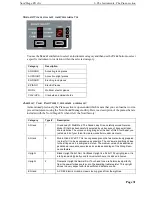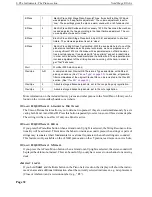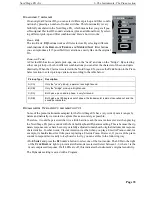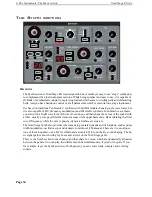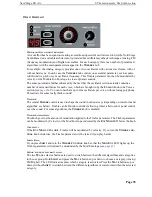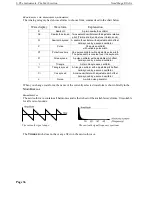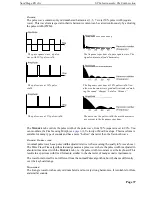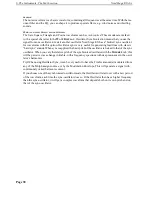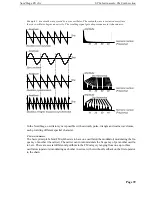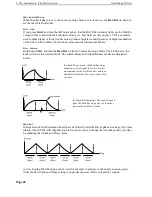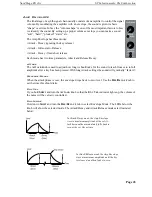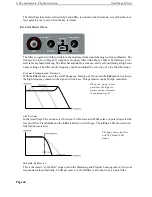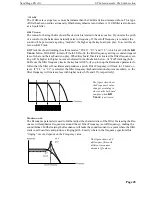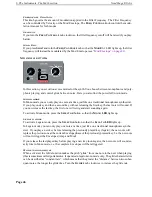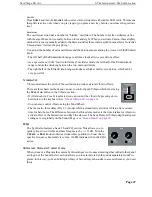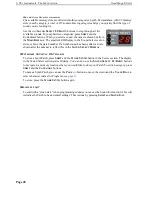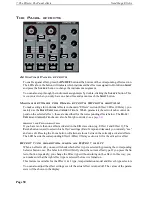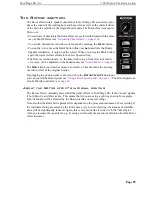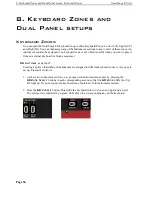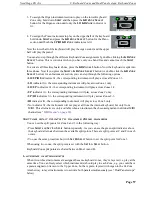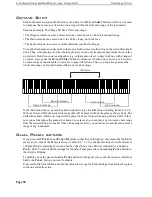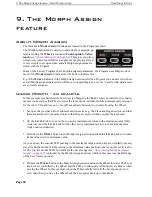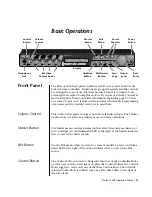
Nord Stage EX v6.x
6. The Instruments: The Synth section
Page 45
12
D
B
The 12 dB/octave slope leaves more harmonics than the 24dB variation discussed above. This type
of filter has been used in various early Oberheim synthesizers and others. A 12 dB filter is also known
as a 2-pole filter.
KB T
RACK
The reason for having the Keyboard Track switch is related to basic acoustics. If you raise the pitch
of a waveform, the harmonics naturally raise in frequency. If the cutoff frequency is constant, the
sound will be perceived as getting “muddier” the higher up the keyboard you play. To avoid this ef-
fect, use KB Track.
KB Track (keyboard tracking) has three modes; “FULL”, “2/3” and “1/3”, which is set with the
KB
T
RACK
button. With KB T turned off (both LEDs off), the filter frequency setting is constant regard-
less of where on the keyboard you play. When Keyboard Track is activated, the filter frequency set-
ting will be higher for higher notes as indicated in the illustration below. At “Full” tracking (both
LEDs on) the filter frequency tracks the keyboard 100% (if you turn up the Resonance parameter to
full so that the filter self-oscillates and produces a pitch, Filter Frequency will track to 12 notes/oc-
tave). If “2/3” or “1/3” is selected, the filter frequency/keyboard relationship is more subtle, i.e. the
filter frequency will increase less with higher notes (66% and 33% respectively).
R
ESONANCE
The Resonance parameter is used to further adjust the characteristics of the Filter. Increasing the Res-
onance will emphasize frequencies around the set Filter Frequency (cutoff frequency), making the
sound thinner. Further raising the Resonance will make the sound resonant to a point where the filter
starts to self-oscillate and produce a ringing pitch. Exactly where in the frequency spectrum this
“ringing” occurs, depends on the Frequency value.
The figure shows how
the Frequency1 value
changes according to
where on the keyboard
you play when
KB
T
RACK
is activated.
4
The figure shows a 24
dB lowpass filter with
different resonance
amounts (Q-values).

